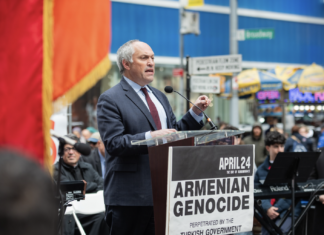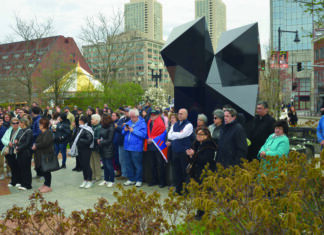WASHINGTON — The Armenian Genocide Museum of America (AGMA) announces that its online museum (www.armeniangenocidemuseum.org) is fully accessible on mobile devices such as tablets and smart phones.
The interactive site, which was launched in April 2015, invites visitors to explore the story of the Armenian people and its fateful experience in 1915. Initially available only for laptop and desktop computer viewing, the online museum is now optimized for mobile devices.
Presenting the Armenian Genocide from multiple perspectives, the online museum highlights the role and extent of American involvement in denouncing the atrocities committed against the Armenian people during World War I and in delivering the humanitarian aid that rescued the remaining survivors from further mistreatment.
The story begins with an exploration of the rich culture of the Armenian people created over millennia to underscore the gravity of the loss of an entire civilization with the destruction of historic Armenia.
This theme has been expanded upon with the preliminary installation of the online museum’s galleries that feature additional information about the richness and creativity of Armenian civilization. They cover such topics as Armenia’s ancient history, its spectacular architectural heritage, the variety of arts created across the centuries, as well as the tragic record of their destruction during and since the years of the Armenian Genocide.
The enormity of the human losses during the Armenian Genocide is set against this background to stress the relationship that once existed between the Armenian people and their now decimated homeland. It reveals the extent to which the places once associated with worship and celebration, with commerce and education, and the historical memory of significant events from the time of the Armenian monarchies, have been erased from the face of the earth.









